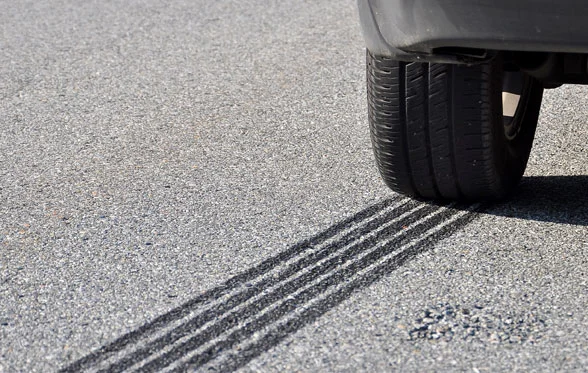On 5th June 2009, the new EC Regulation introducing mandatory carbon dioxide (CO2) emissions limits for new passenger cars was finally published. This new regulation, (EC) No. 443/2009, is part of the European Union's commitment to reduce the fleet average CO2 emissions from new passenger cars to 120 g/km. It specifies that each vehicle manufacturer must achieve average CO2 emissions equivalent to 130 g/km for all of the new passenger cars it registers in the European Union or face hefty fines.
(Note: The European Commission have specified that the remaining 10 g/km reduction necessary to meet the 120 g/km target will be achieved by "other technological improvements and by an increased use of sustainable biofuels".)
Compliance with this new Regulation will be "phased in" over a four year period. In 2012, 65% of the new passenger cars registered in the European Union by each manufacturer will be required to comply with the specified CO2 emissions target, increasing to 75% in 2013, 80% in 2014 and 100% from 2015 onwards.
Exemptions from compliance with this Regulation are provided for special purpose vehicles, such as motor caravans, armoured vehicles, ambulances, hearses and wheelchair accessible vehicles. The Regulation also allows vehicle manufacturers that are responsible for registering less than 10,000 new passenger cars per year within the European Union to apply for an alternative "manufacturer specific" CO2 emissions target to be applied to them. This alternative "manufacturer specific" CO2 emissions target will be based on what is considered to be technologically and economically feasible for that manufacturer. Vehicle manufacturers responsible for registering less than 300,000 new passenger cars per year within the European Union can also apply for an alternative "manufacturer specific" CO2 emissions target to be applied to them, but the rules on setting a "manufacturer specific" CO2 emissions target for such manufacturers are more stringent.
The Regulation specifies CO2 emissions targets which are directly related to the vehicle's unladen mass (e.g. lighter cars are required to meet a more stringent CO2 emissions target than heavier cars), rather than one specific target and includes a formula for calculating CO2 emissions targets based on unladen mass. This formula is structured to ensure that the overall European fleet will meet the 130 g/km target.
Fines for failing to meet the specified CO2 emissions target will be based on the amount by which the vehicle manufacturer failed to meet its CO2 emissions target (in g/km) in a given year, multiplied by the number of vehicles registered within the European Union by that manufacturer in that year, multiplied by an "excess emissions premium". Between 2012 and 2018, an excess emissions premium of €5 will be applied for the first gram over the specified CO2 emissions target, €15 for the second gram, €25 for the third gram and €95 for the fourth and any subsequent grams. From 2019, an excess emissions premium of €95 will be applied for every gram over the specified emissions target.
The Regulation permits additional credits for vehicles with CO2 emissions of less than 50 g/km. For 2012 and 2013, such vehicles will count as 3.5 cars in the manufacturer's average CO2 emissions calculations. This reduces to 2.5 cars in 2014, 1.5 cars in 2015 and 1 car in 2016 and subsequent calendar years.
The Regulation also permits the CO2 emissions figures for vehicles capable of running on a mixture of petrol with 85% ethanol (E85) to be reduced by 5% before including them into the manufacturer's average CO2 emissions calculations. However, this relaxation is only permitted until 31st December 2015.
Table 1 gives a brief summary of how the various requirements of Regulation (EC) No. 443/2009 are "phased in" between calendar years 2012 and 2019:
TABLE 1 - Phase in of (EC) No. 443/2009 Requirements
| 2012 | 2013 | 2014 | 2015 | 2016 | 2017 | 2018 | 2019 | |
| Percentage of vehicles required to comply with CO2 emissions target | 65% | 75% | 80% | 100% | 100% | 100% | 100% | 100% |
| Excess emissions premium for first gram over target | €5 | €5 | €5 | €5 | €5 | €5 | €5 | €95 |
| Excess emissions premium for second gram over target | €15 | €15 | €15 | €15 | €15 | €15 | €15 | €95 |
| Excess emissions premium for third gram over target | €25 | €25 | €25 | €25 | €25 | €25 | €25 | €95 |
| Excess emissions premium for fourth and subsequent grams over target | €95 | €95 | €95 | €95 | €95 | €95 | €95 | €95 |
| Passenger cars with CO2 emissions less than 50 g/km count as | 3.5 cars | 3.5 cars | 2.5 cars | 1.5 cars | 1 car | 1 car | 1 car | 1 car |
| 5% reduction for passenger cars capable of running on E85 available | Yes | Yes | Yes | Yes | No | No | No | No |
